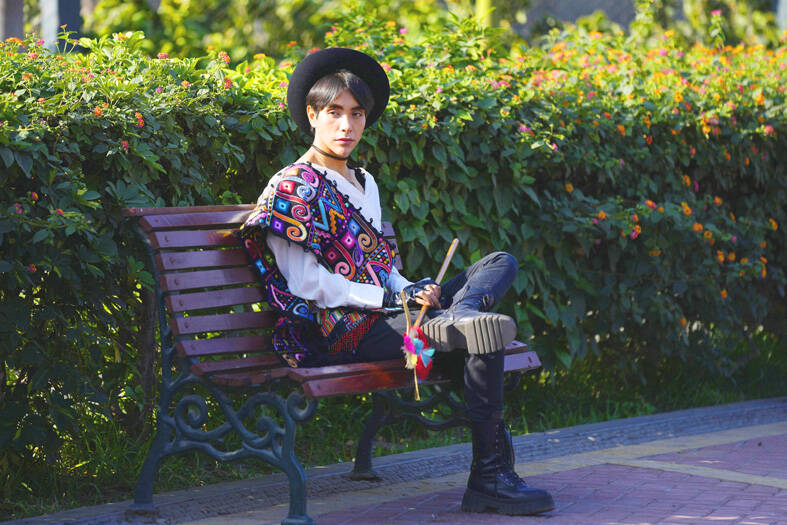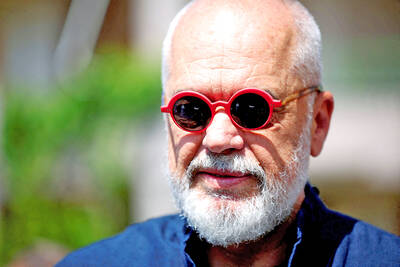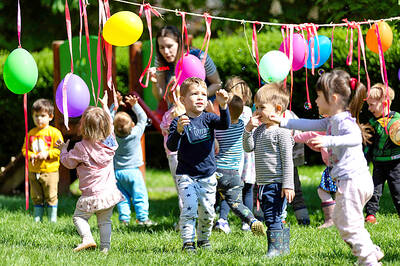What happens when you take Quechua, the most widely spoken indigenous language in the Americas, and fuse it with K-pop, the global musical sensation with roots in South Korea?
Ask Lenin Tamayo, who has become a social media phenomenon with “Q-pop” and released his first digital album last week.
Tamayo grew up listening to his mother, a Peruvian folk artist who sings in Spanish and Quechua, a language shared by 10 million speakers in countries including Peru, Argentina, Bolivia, Brazil, Chile, Colombia and Ecuador.

Photo: AP
As a teenager, K-pop became his passion and helped him find a group of like-minded female classmates who helped fight the bullying he says he faced at school for his indigenous appearance.
Now himself a musician, the 23-year-old Tamayo has fused those chapters, mixing Spanish and Quechua lyrics with K-pop beats to create Q-pop. He has amassed more than 4.4 million likes on TikTok and released five digital singles online.
Making music in his native language “helps embrace the roots, but without being oblivious to modernity and globalization,” he said.
For Tamayo, the K-pop aesthetic helped influence a personal style where he mixes his own choreography and a way of acting that helps reinforce a key message: love and freedom.
“Love to unite people and the freedom to be oneself, because it’s all about embracing existence and seeking a full, full, real life, with depth,” he said.
After completing his psychology studies at Universidad Nacional Mayor de San Marcos, Tamayo said he could not picture himself practicing that profession. He wanted to be a singer, and he wanted his music to mix his passions.
“Why can’t I transfer this K-pop experience to Andean music?” Tamayo said, while practicing dance steps at his home in a Lima suburb.
Tamayo is the only child of Yolanda Pinares, a contemporary Andean music singer who taught him the importance of showing his Quechua identity in a country where racism “is covered up,” he said.
When he was a child, he said he was bullied at school for being shy and for having a thin complexion, long eyes, straight black hair and sharp cheekbones.
These traits are somewhat similar between Andean youth and South Korean singers, he said, something that has helped K-pop become popular even in remote villages and on the outskirts of Lima, where millions of people with indigenous roots live.
“Art is a vehicle to move consciences and generate change,” said Tamayo, who last week released Amaru, his debut album in digital format.
“Amaru” means snake in Quechua, a word that is tied to the history, lyrics, music, mythology of the Incas and modern sounds.
In a preview video for Amaru, policemen are seen beating protesters carrying a Peruvian flag and then chasing a woman who escapes through an Andean forest.
The scene evokes a fresh memory of the recent citizen protests demanding the resignation of Peruvian President Dina Boluarte that have left 67 dead, the majority of whom are of indigenous origin.
Like thousands of Peruvians, Tamayo participated in the protests at the beginning of the year in the capital.
“It’s very important to make this type of music because it allows you to generate change and generate hope in young people,” he said.

FRAUD ALLEGED: The leader of an opposition alliance made allegations of electoral irregularities and called for a protest in Tirana as European leaders are to meet Albanian Prime Minister Edi Rama’s Socialist Party scored a large victory in parliamentary elections, securing him his fourth term, official results showed late on Tuesday. The Socialist Party won 52.1 percent of the vote on Sunday compared with 34.2 percent for an alliance of opposition parties led by his main rival Sali Berisha, according to results released by the Albanian Central Election Commission. Diaspora votes have yet to be counted, but according to initial results, Rama was also leading there. According to projections, the Socialist Party could have more lawmakers than in 2021 elections. At the time, it won 74 seats in the

A Croatian town has come up with a novel solution to solve the issue of working parents when there are no public childcare spaces available: pay grandparents to do it. Samobor, near the capital, Zagreb, has become the first in the country to run a “Grandmother-Grandfather Service,” which pays 360 euros (US$400) a month per child. The scheme allows grandparents to top up their pension, but the authorities also hope it will boost family ties and tackle social isolation as the population ages. “The benefits are multiple,” Samobor Mayor Petra Skrobot told reporters. “Pensions are rather low and for parents it is sometimes

CONTROVERSY: During the performance of Israel’s entrant Yuval Raphael’s song ‘New Day Will Rise,’ loud whistles were heard and two people tried to get on stage Austria’s JJ yesterday won the Eurovision Song Contest, with his operatic song Wasted Love triumphing at the world’s biggest live music television event. After votes from national juries around Europe and viewers from across the continent and beyond, JJ gave Austria its first victory since bearded drag performer Conchita Wurst’s 2014 triumph. After the nail-biting drama as the votes were revealed running into yesterday morning, Austria finished with 436 points, ahead of Israel — whose participation drew protests — on 357 and Estonia on 356. “Thank you to you, Europe, for making my dreams come true,” 24-year-old countertenor JJ, whose

CANCER: Jose Mujica earned the moniker ‘world’s poorest president’ for giving away much of his salary and living a simple life on his farm, with his wife and dog Tributes poured in on Tuesday from across Latin America following the death of former Uruguayan president Jose “Pepe” Mujica, an ex-guerrilla fighter revered by the left for his humility and progressive politics. He was 89. Mujica, who spent a dozen years behind bars for revolutionary activity, lost his battle against cancer after announcing in January that the disease had spread and he would stop treatment. “With deep sorrow, we announce the passing of our comrade Pepe Mujica. President, activist, guide and leader. We will miss you greatly, old friend,” Uruguayan President Yamandu Orsi wrote on X. “Pepe, eternal,” a cyclist shouted out minutes later,